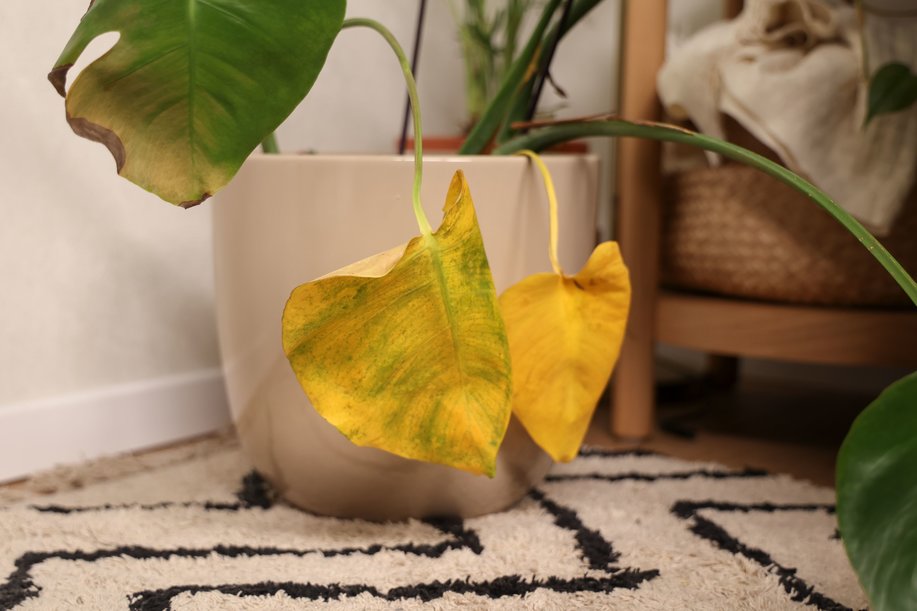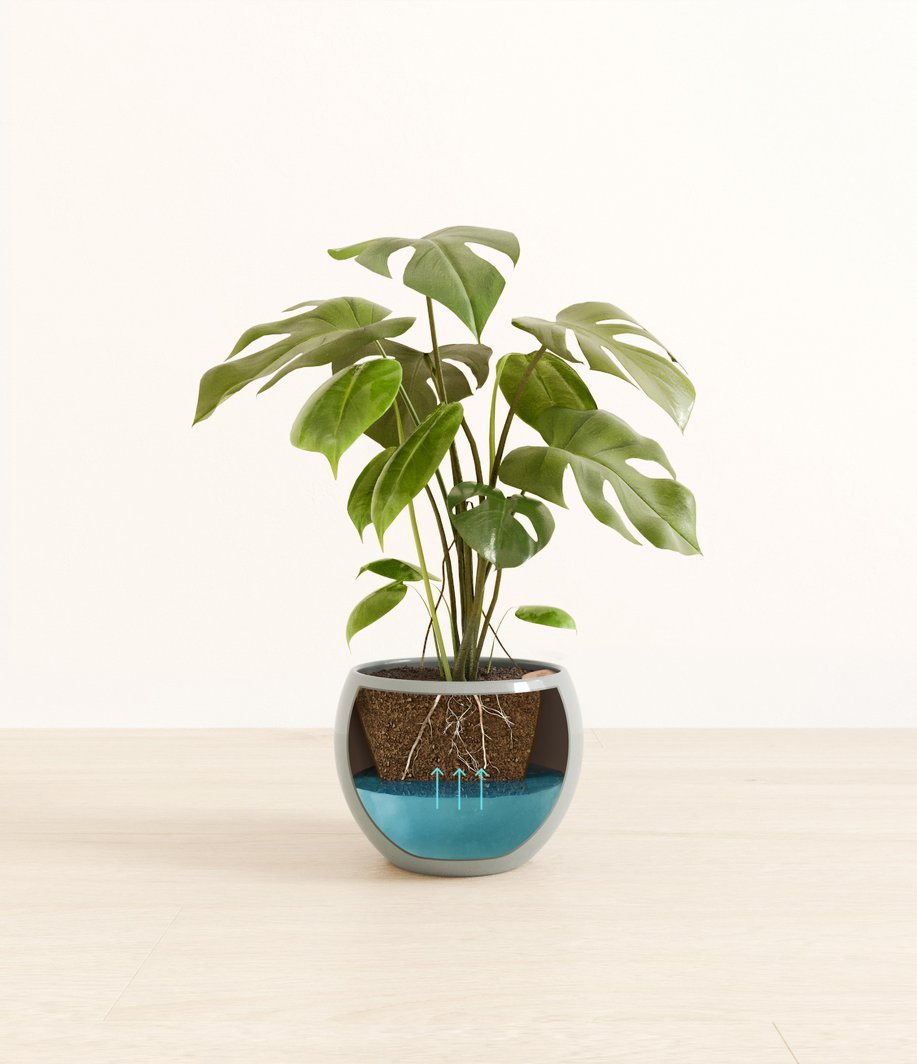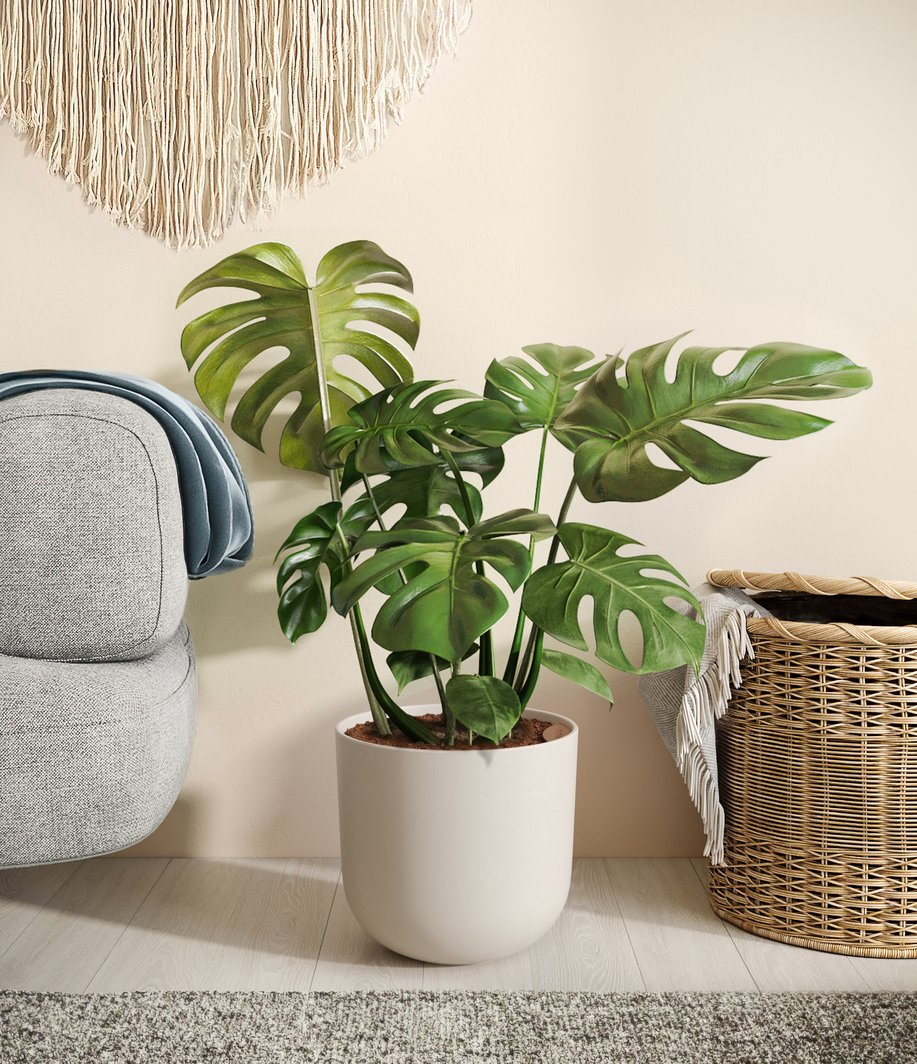Why Are My Monstera Leaves Yellowing?
Monstera, or Monstera deliciosa, is a gorgeous tropical plant native to Central America with massive, bold split foliage sprouting thick green stalks. This plant is always the focal point of any room, growing up to 3 feet tall and spreading around 2-3 feet.
Though the Monstera is a relatively easy-going houseplant, the most common issue you might run across is the Monstera leaves turning yellow. Fortunately, there are solutions to address the various reasons for Monstera's yellow leaves. Keep reading to learn the possible causes and how to fix them.

Temperature
Monstera plants are accustomed to the temperate environment of the rainforest. Temperature plays a large factor in the plant's health and can be the culprit for yellow monstera leaves. The ideal temperature for this plant is between 65-85˚F (18-29˚C).
Keeping your home within that range will allow the plant to thrive and stave off any Monstera leaf turning yellow. Be mindful that anything below 50˚F (10˚C) will cause the plant to stop growing, resulting in yellow leaves. Avoid extreme temperatures in either direction, as it will put unwanted stress on the plant.
How To Protect Your Monstera From Temperature Changes
If you notice yellowing leaves and want to determine if temperature is the cause, look at the plant's location. Are there any sources of extreme temperature, whether hot or cold? If so, find a location where the temperature can remain stable to place the Monstera.
Here are some questions you can ask about the location of the Monstera:
- Is it near a cold draft?
- Is it near a heater?
- Is it too close to a south-facing window?
Lighting
Monstera plants are all about environmental stability, so with any care factor, they are not a fan of extremes; this includes light. Yellowing Monstera leaves can happen if the plant gets too much or too little light. One way to know if it's too much light, as opposed to too little, is if the leaves are also scorched.
The Perfect Lighting For Your Monstera Plant
The Monstera prefers bright, indirect light. Place your plant near an east or west-facing window where it can get plenty of natural light without too much direct sunlight. The light of a south-facing window might be too harsh, especially in the afternoon heat, but it can be diffused with a sheer curtain.

Pests
One of the biggest nuisances for any plant is pests. The Monstera, in particular, can be susceptible to aphids, thrips, scale, spider mites, and sap-sucking mealybugs. You will see evidence of these pests on the plant's foliage, like sporadic holes in the leaves, white webbing on the underside, a sticky substance on the surface, etc. These pests can be responsible for a yellow leaf on the Monstera.
How To Get Rid Of Pests On Your Monstera
If your Monstera is infested with pests, the best thing to do is to spray the plant down with a direct stream of water to remove them immediately. Wash the leaves with insecticidal soap or spray them with neem oil. Continue treating until there are no more signs of an infestation.
Nutrition
The Monstera plant's yellow leaves could be due to an imbalance of nutrition. If you haven't fertilized your plant in a while, it could have absorbed all the nutrients in the current potting mix and is suffering from a nitrogen, phosphorus, or potassium deficiency. On the other hand, the yellowing Monstera leaves may be due to overfertilization, which alters the soil's acidity, resulting in salt burn.
How To Provide Your Monstera With The Right Nutrition
If the issue is a nutrient deficiency, it's time to fertilize your plant with a well-balanced, organic fertilizer. You may also consider worm casting or top-dressing your Monstera with fresh soil.
If the issue is overfertilization, yellowing leaves will typically be accompanied by slow growth, a white crust on the top of the soil, and browning or crispy leaf edges. Flush the soil thoroughly until the water runs out of the pot's drainage hole. Reduce the amount or frequency of fertilization.

Moisture
Monstera leaves yellowing is often due to a moisture issue, whether overwatering or underwatering. If the plant is getting too much water, the lower leaves turn yellow first and may also develop black or brown spots. If it's not getting enough water, you'll see yellowing leaves everywhere on Monstera, possibly accompanied by light-brown dry spots. Check the soil to determine which moisture issue is the cause.
How To Give Your Monstera The Right Amount Of Moisture
Always check the soil before watering Monstera. Only water if the top 2-3 inches of the plant are dry. Be sure to check often to avoid extended periods between watering, which could lead to underwatering.
If you don't want to worry about moisture issues, try an easyplant pot. All you have to do is fill the reservoir once a month, and the built-in watering system takes care of the plant's watering needs for you.
Can Yellow Monstera Leaves Turn Green Again?
No, once leaves start yellowing, they don't turn green again. The leaf will likely continue yellowing to completion and eventually fall off
Get a Monstera Plant with easyplant Today!
Yellowing Monstera is a distress signal that points to a fixable issue, and following the solutions outlined will get your plant back on track to perfect health. Monstera plants are relatively easy to care for and very rewarding when they thrive in your home.
